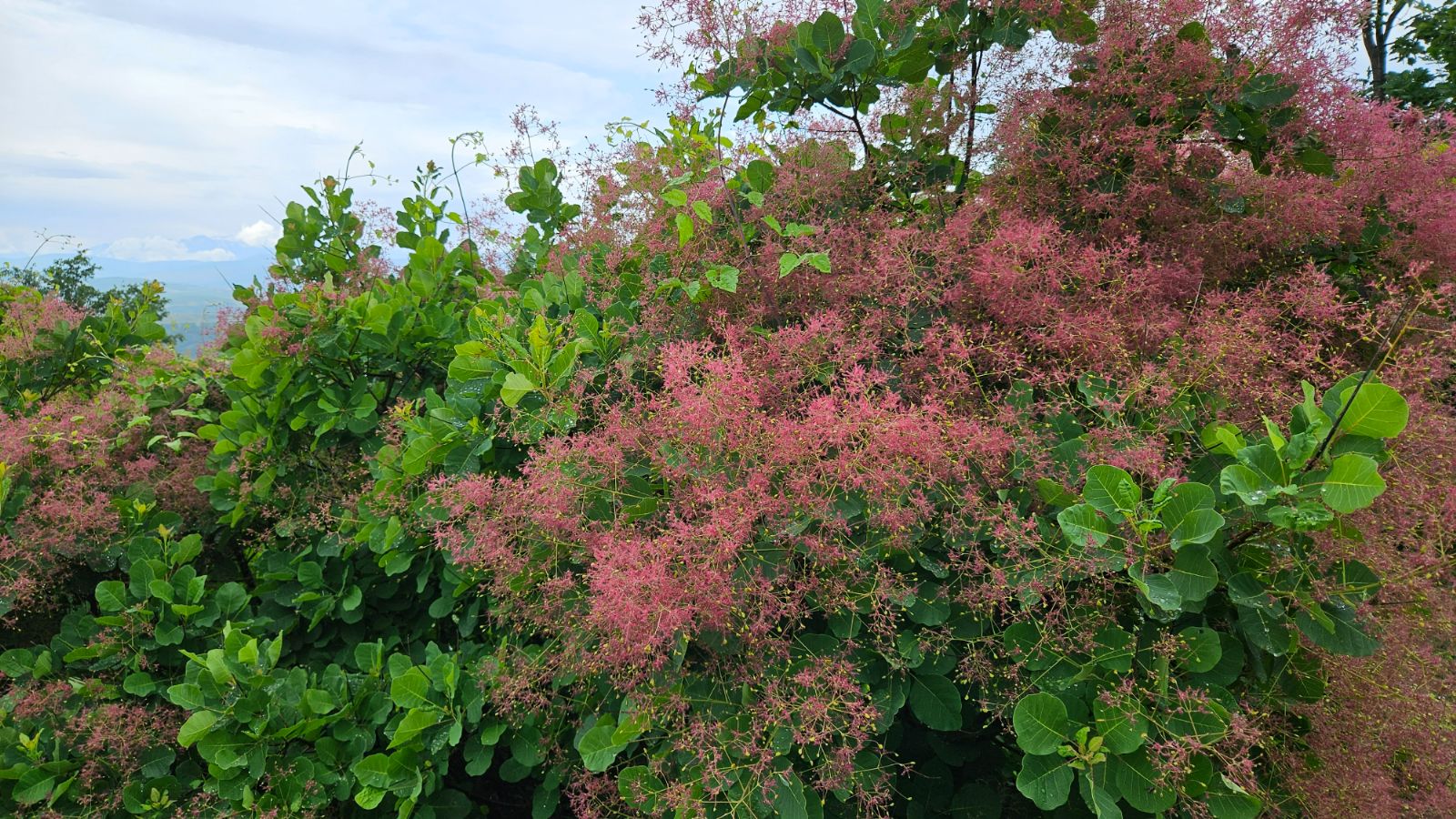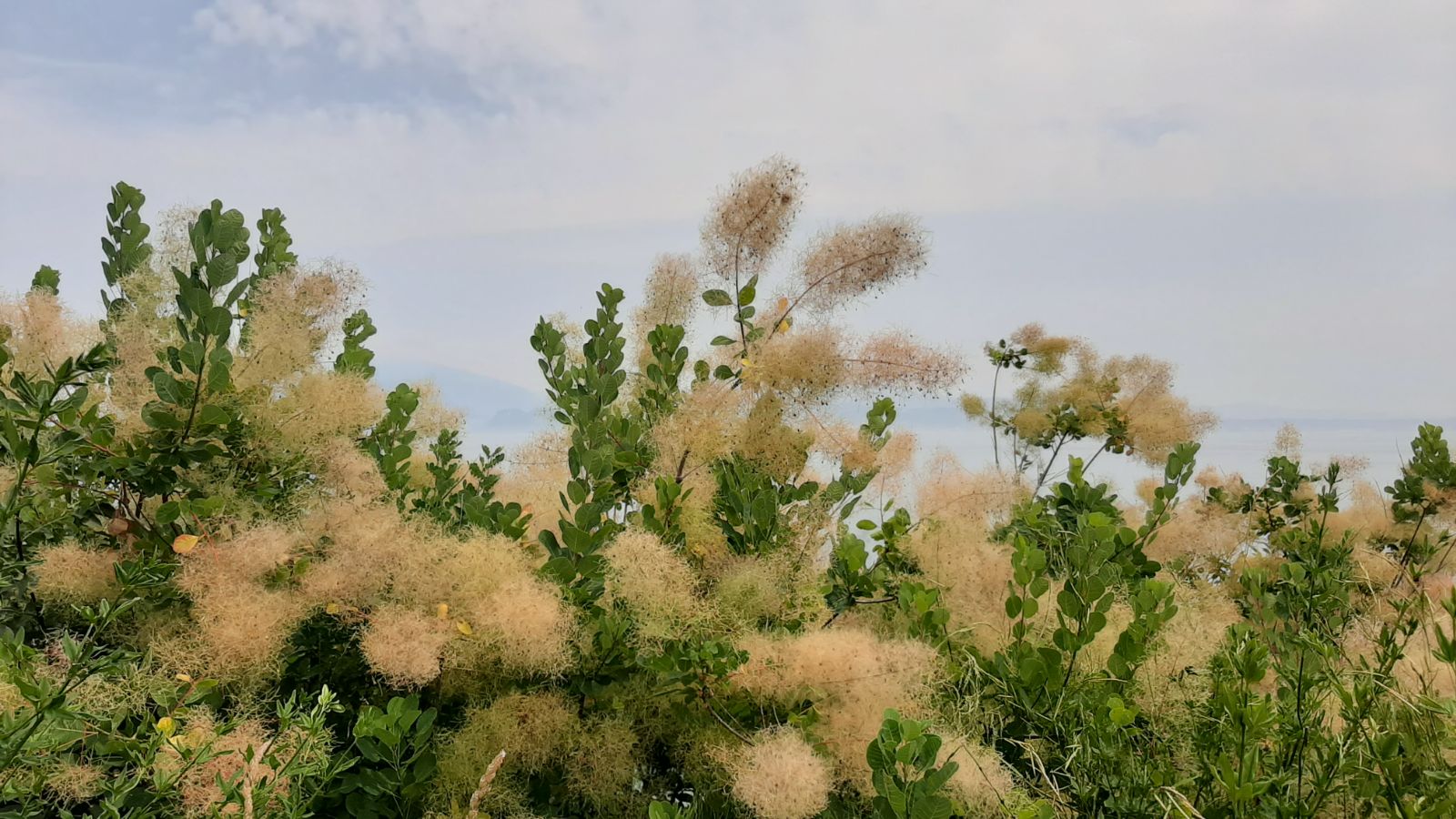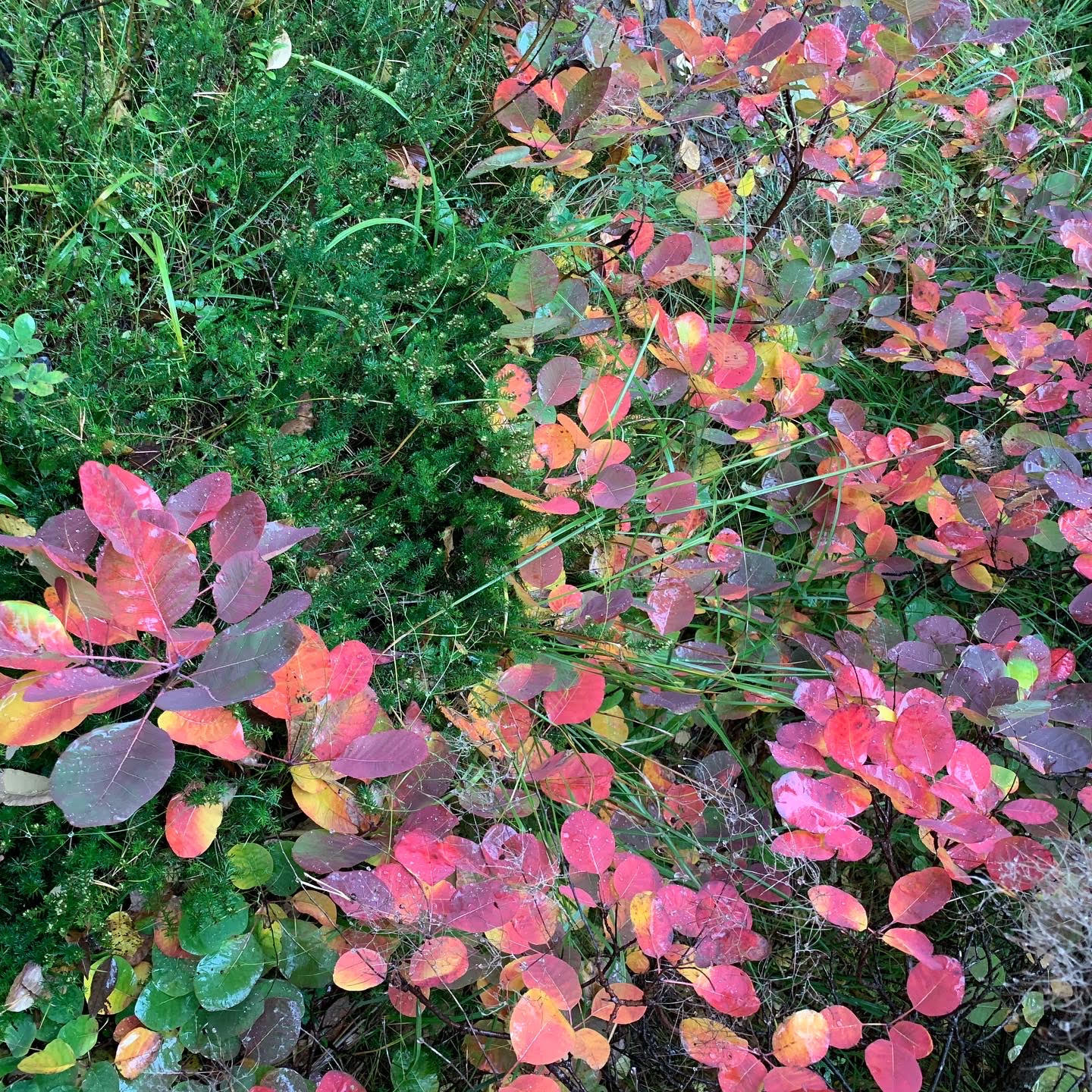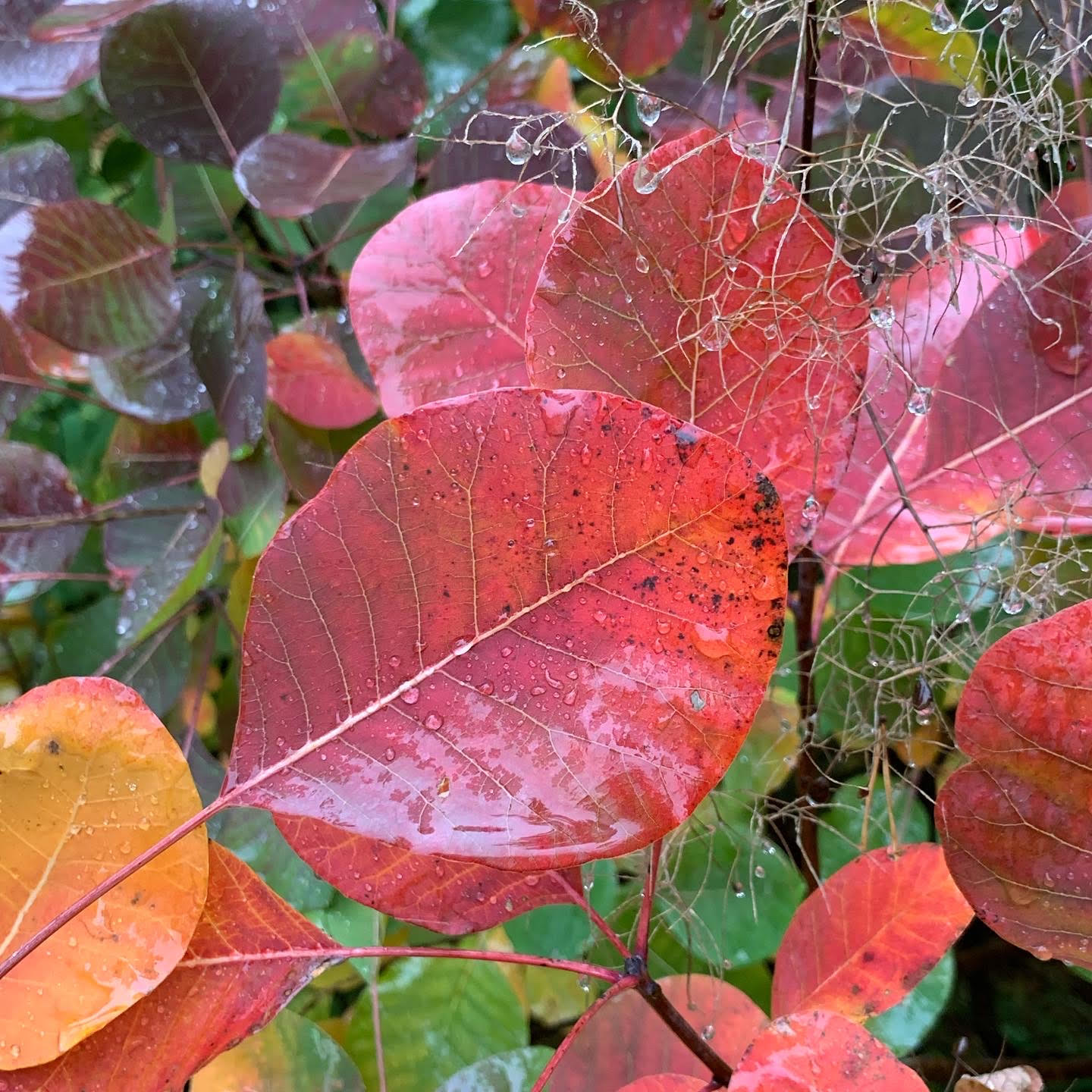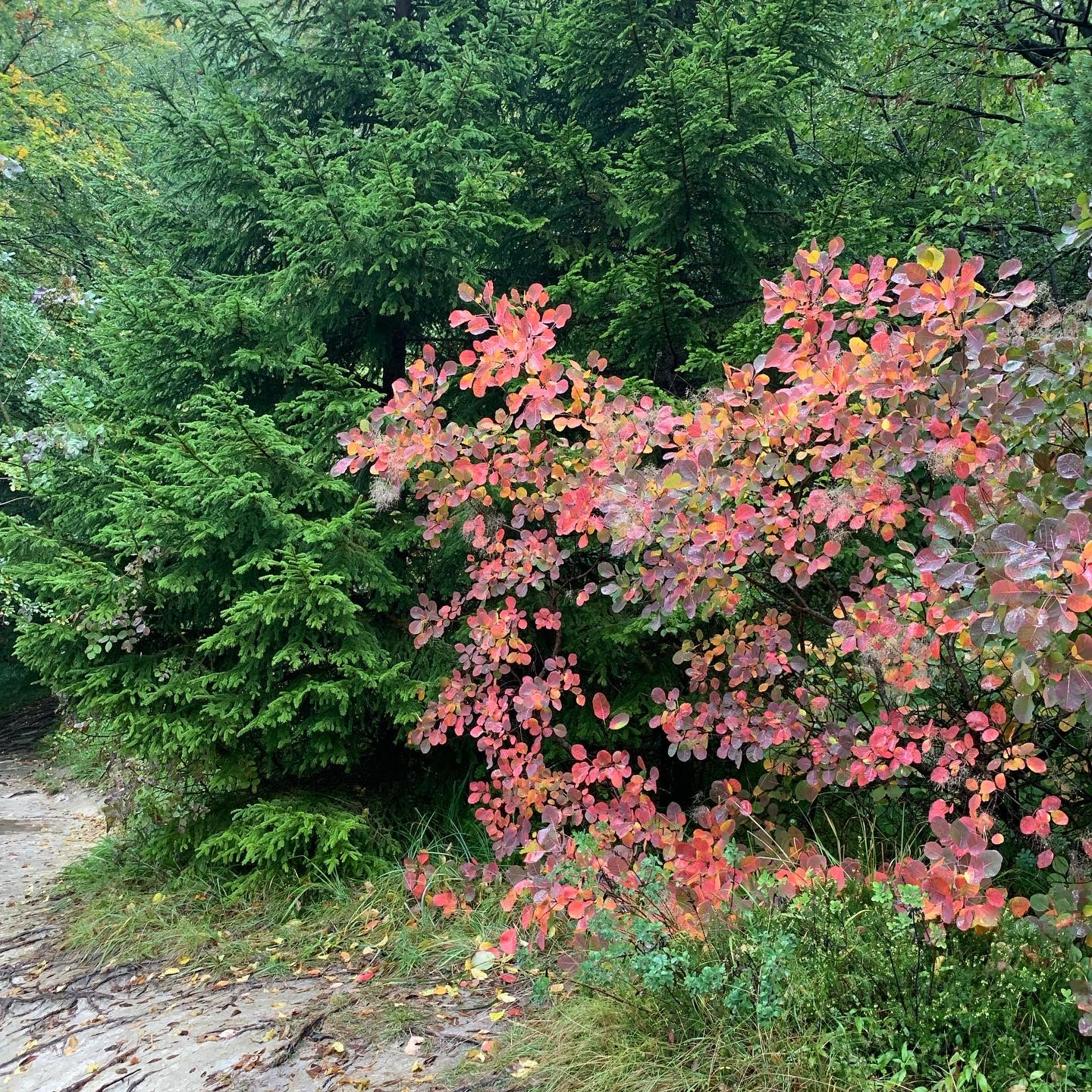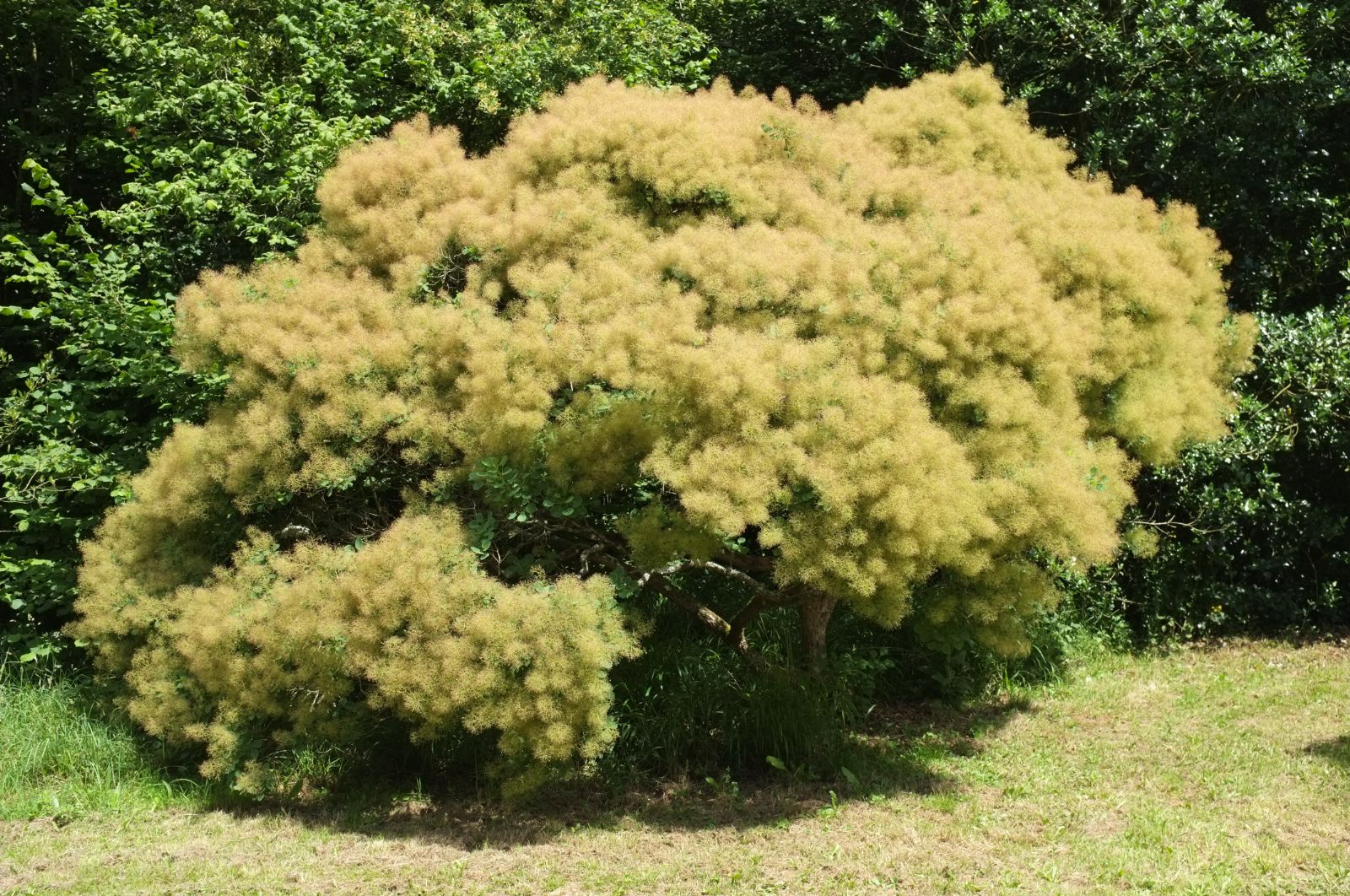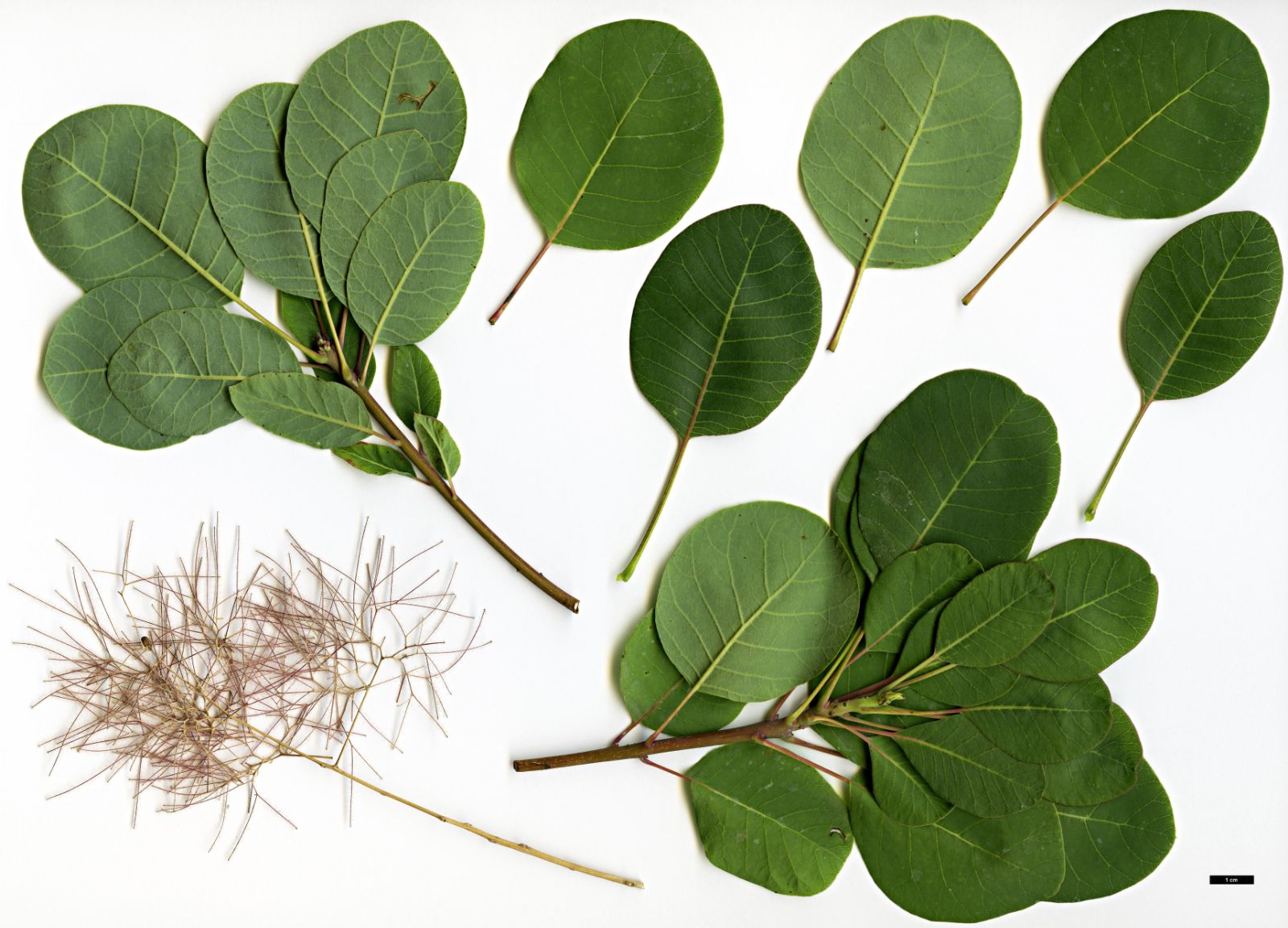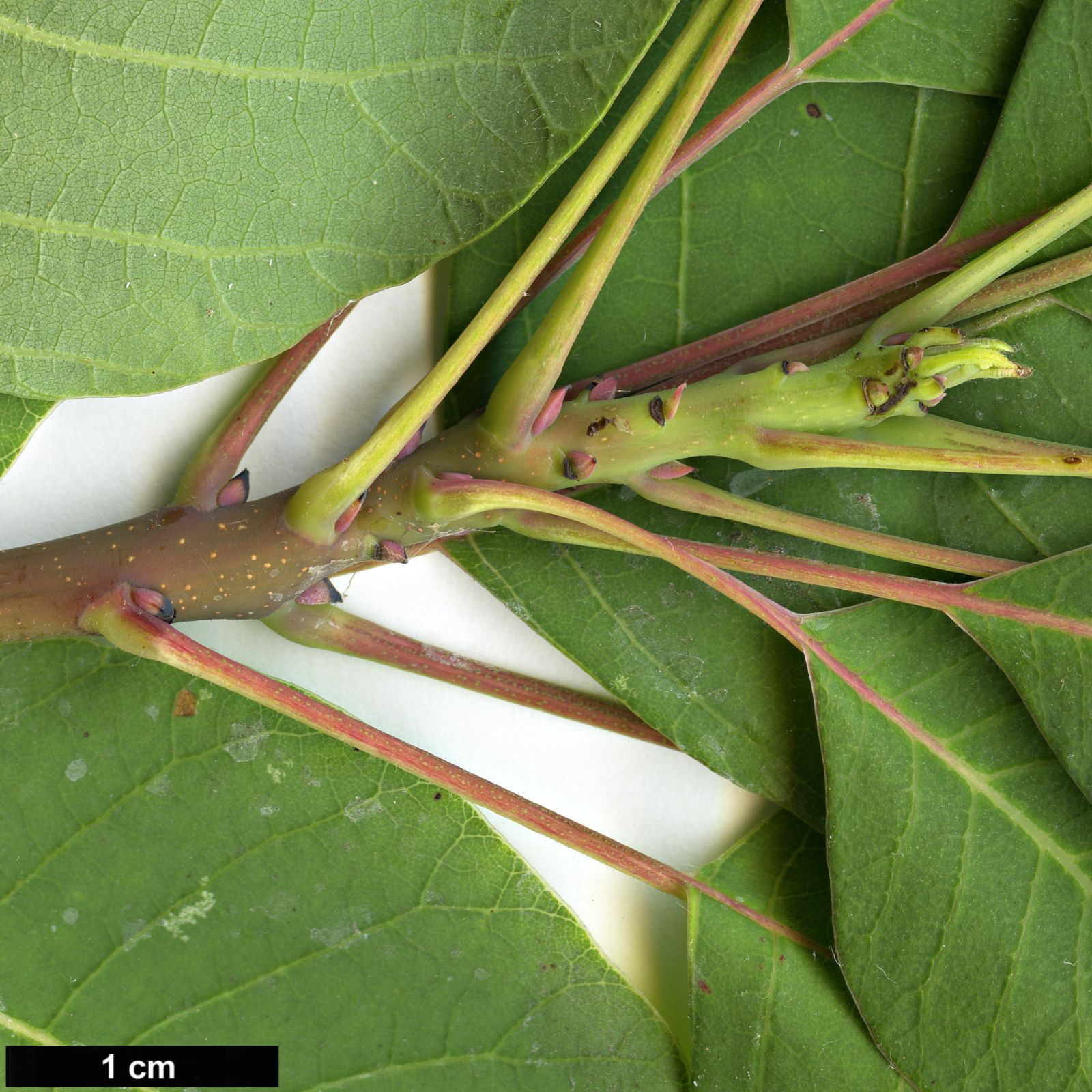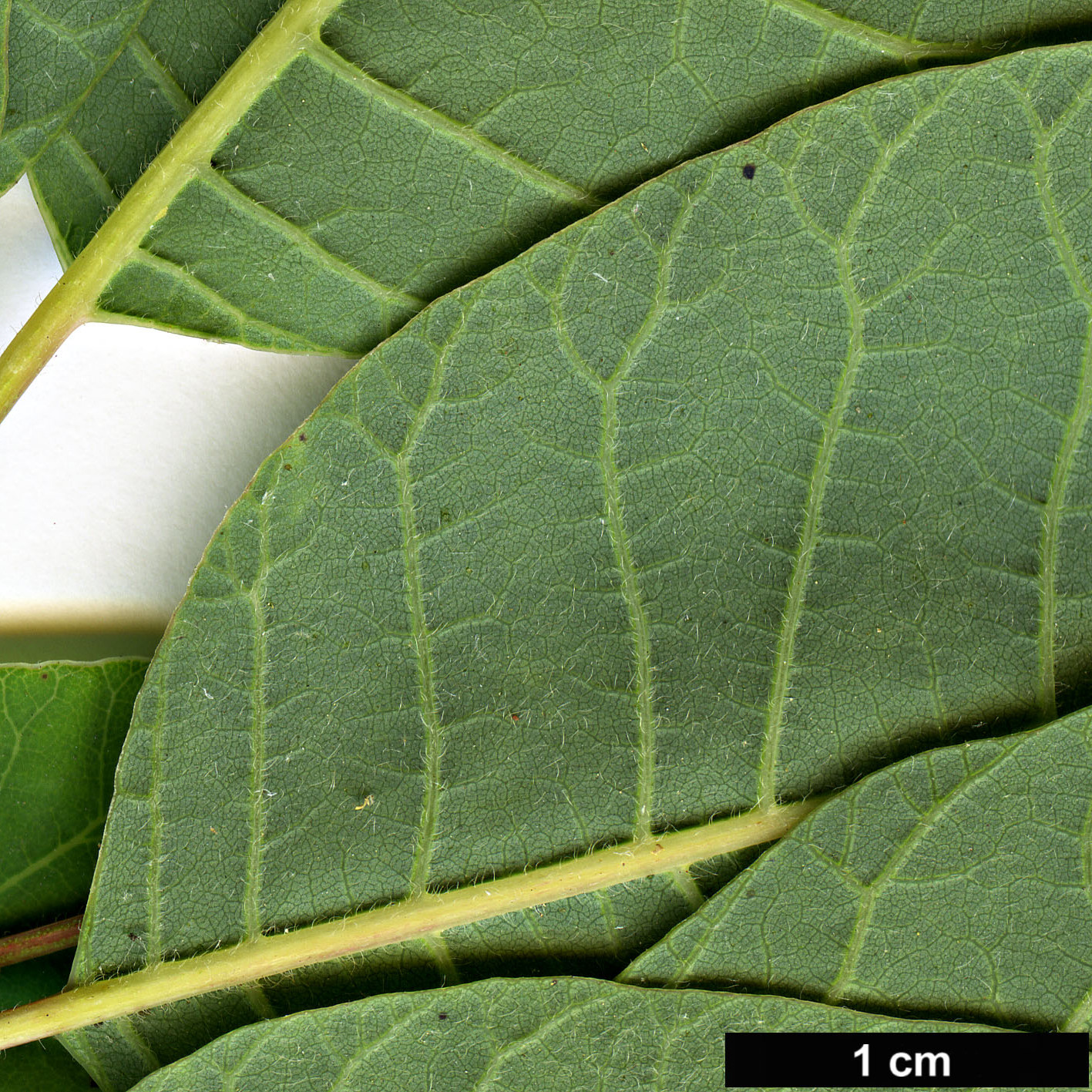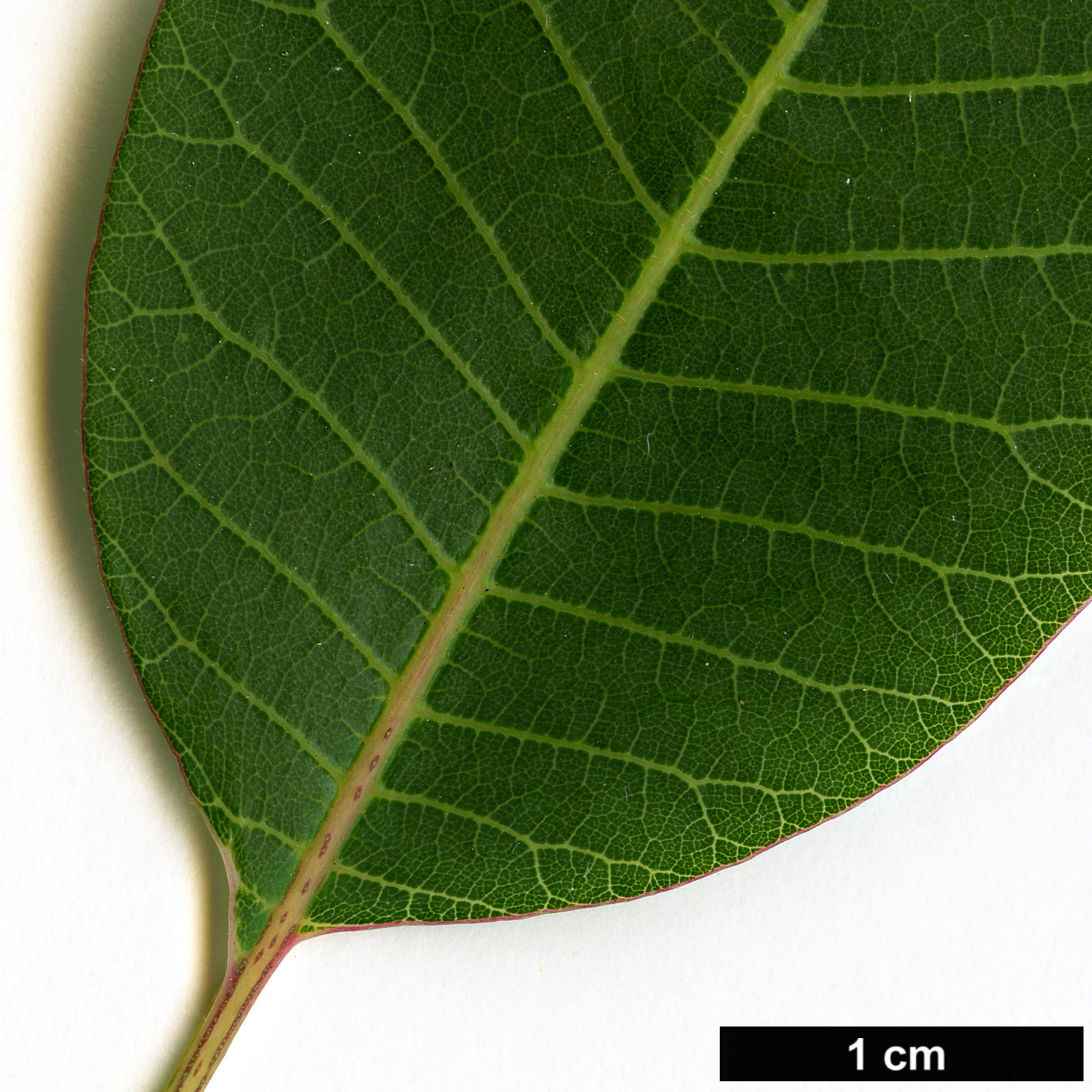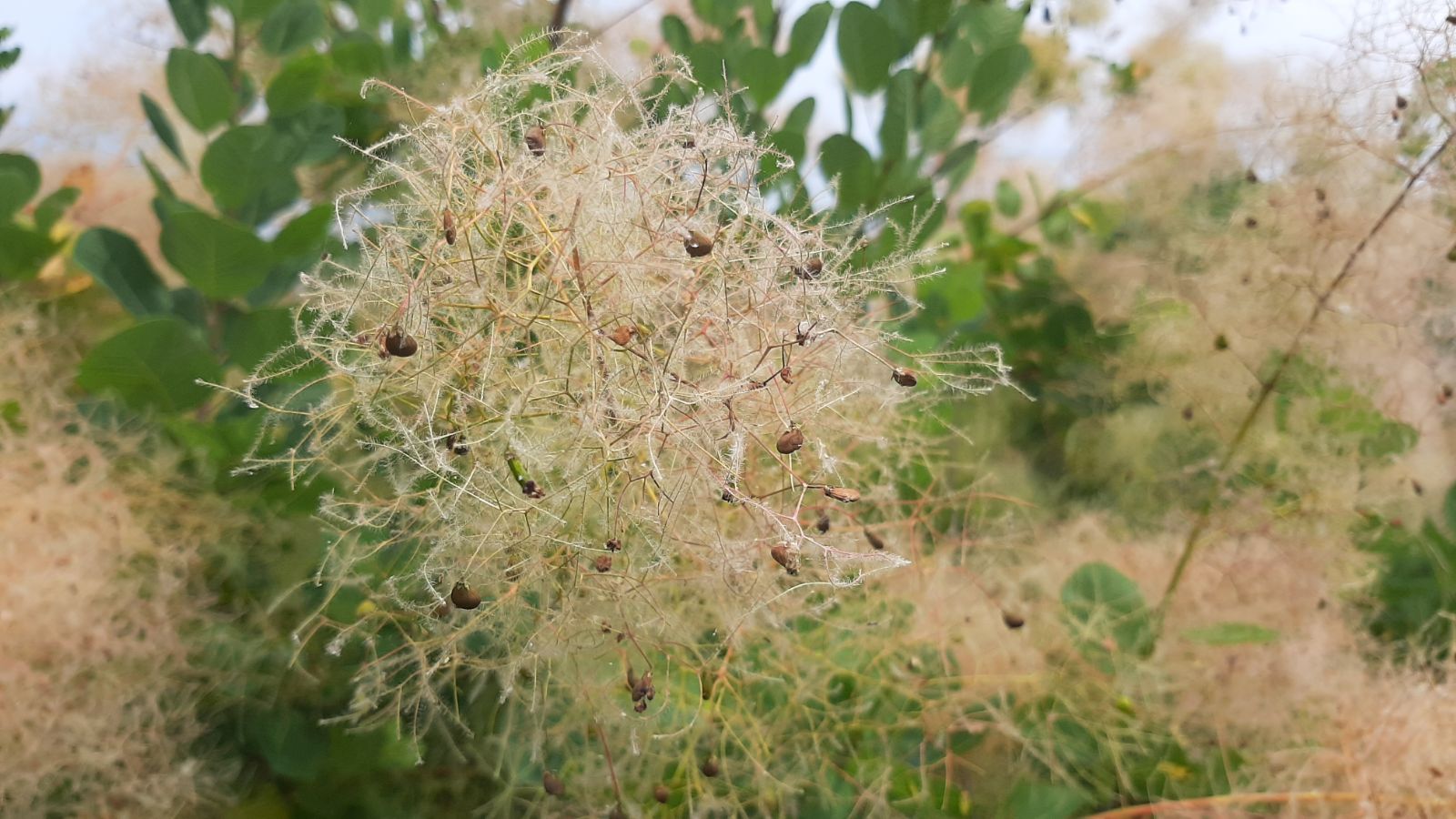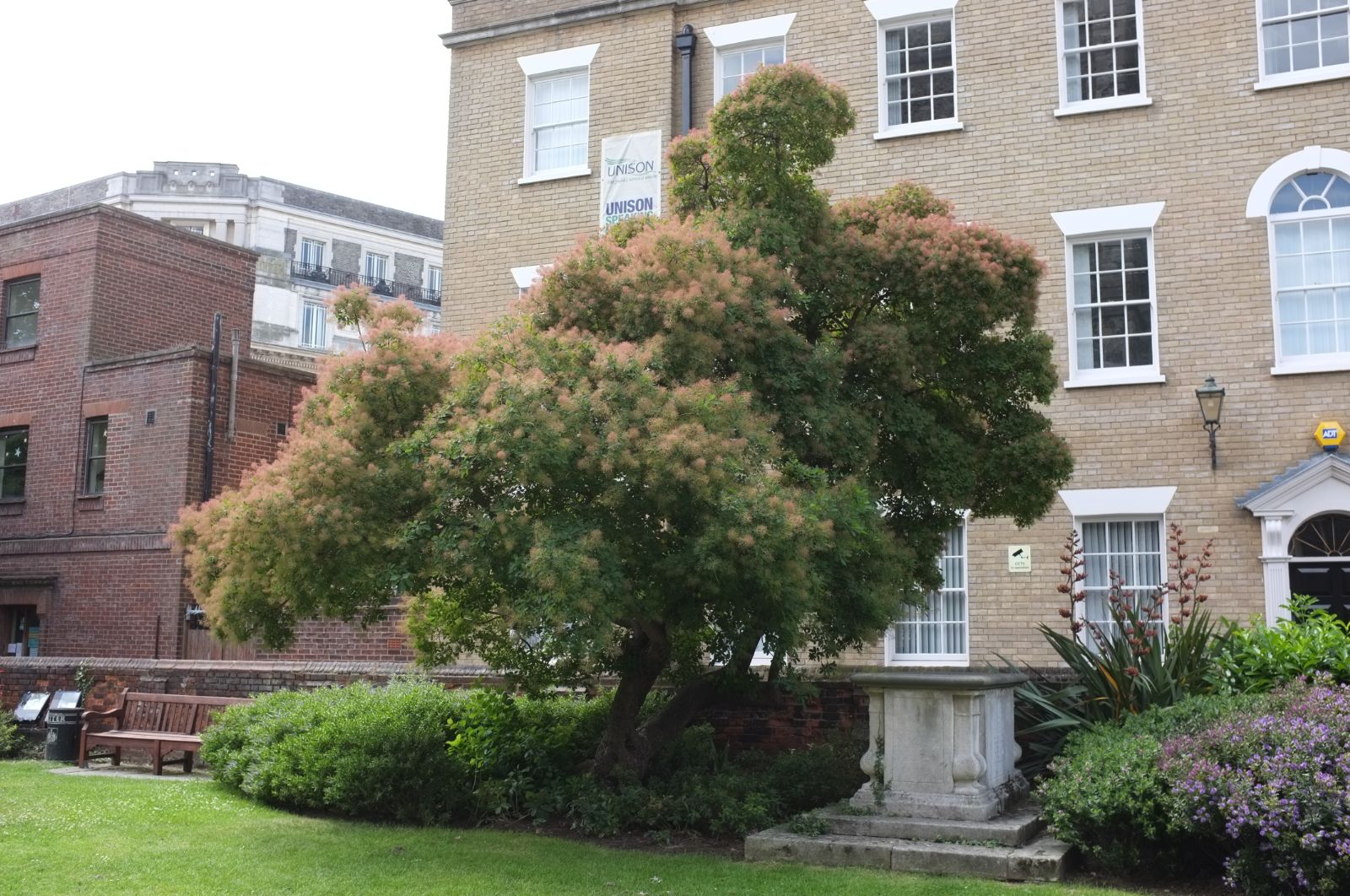Cotinus coggygria
Credits
Article from Bean's Trees and Shrubs Hardy in the British Isles
Recommended citation
'Cotinus coggygria' from the website Trees and Shrubs Online (treesandshrubsonline.
Infraspecifics
Other taxa in genus
A deciduous shrub, up to 15 ft high, of round, bushy habit, and often considerably wider than it is high; the branchlets glabrous. Leaves simple, glabrous, orbicular or obovate, rounded or slightly notched at the apex; 11⁄2 to 3 in. long, with well-marked parallel veins and a stalk about half the length of the blade. Panicles loose, terminal, much-branched, many of the thread-like, final ramifications bearing no flower but developing a large number of silky hairs. During July the whole inflorescence (6 to 8 or more inches long and wide) turns a pale flesh colour, afterwards a smoky grey. Flowers few and small; fruit dry, prominently veined, one-seeded, 1⁄4 in. across.
Native of Middle and S. Europe, extending eastwards to the Himalaya and China. In the late summer few hardy shrubs are more striking and beautiful than this. It produces its inflorescences so abundantly that the entire plant becomes covered with a filmy pinkish envelope. The leaves remain long on the plant, turning yellow or red before they fall. The wood is yellowish, and a good yellow dye is obtained from the twigs. Several popular names have been given to it besides the one quoted above, such as ‘smoke plant’, ‘burning bush’, and ‘wig-tree’, all in allusion to the characteristic inflorescence. This shrub, like its American ally, does not require a very rich soil, as it then grows too much and gives little flower.
From the Supplement (Vol. V)
cv. ‘Flame’. – Allen Coombes, of the Hillier Arboretum, has suggested on botanical grounds that this clone is a hybrid between C. coggygria and C. obovatus (americanus). The fact that it was originally distributed as C. americanus ‘Chenault’s Variety’ lends support to this conclusion.
cv. ‘Notcutt’s Variety’. – In the original printing of the current edition the epithets rubrifolius and atropurpureus were mentioned as synonyms of this clone. In fact both belong to the old ‘Foliis Purpureis’. Horticultural phrase-names such as this have no botanical standing, and the epithet atropurpureus was not applicable for the purple-leaved form, having been used first for the form with green leaves and a purple inflorescence. So in 1933 Dr Bloom published the new name Rhus cotinus var. rubrifolius for ‘Foliis Purpureis’.
cv. ‘Royal Purple’. – Although rather darker in leaf than ‘Notcutt’s Variety’, this is not really superior to it. It seems to be a distinguishing character of this clone that the leaves have a very thin red edge, most noticeable by transmitted light.
C. ‘Grace’. – a hybrid between C coggygria ‘Velvet Cloak’ (a purple-leaved clone) and C. obovatus, raised by Peter Dummer of the Hillier Nurseries and named after his daughter. It received an Award of Merit for its autumn colour in 1983, and its raiser the Reginald Cory Memorial Cup in the following year. It is proving to be very vigorous. Other seedlings from this cross are under trial (see further the article by Mr Dummer in The Plantsman, Vol. 6, pp. 125–6 (1984)). See also the remark under C. coggygria ‘Flame’ above.
f. purpureus (Dupuy-Jamain) Rehd.
Synonyms
Rhus cotinus var. purpureus Dupuy-Jamin
Rhus cotinus var. atropurpurea Burvenich
Inflorescence in some shade of purplish pink; leaves green. In naming this variant, Dupuy-Jamin remarked (Rev. Hort., 1870, p. 567) that it occurred fairly frequently when the species was raised from seed.

